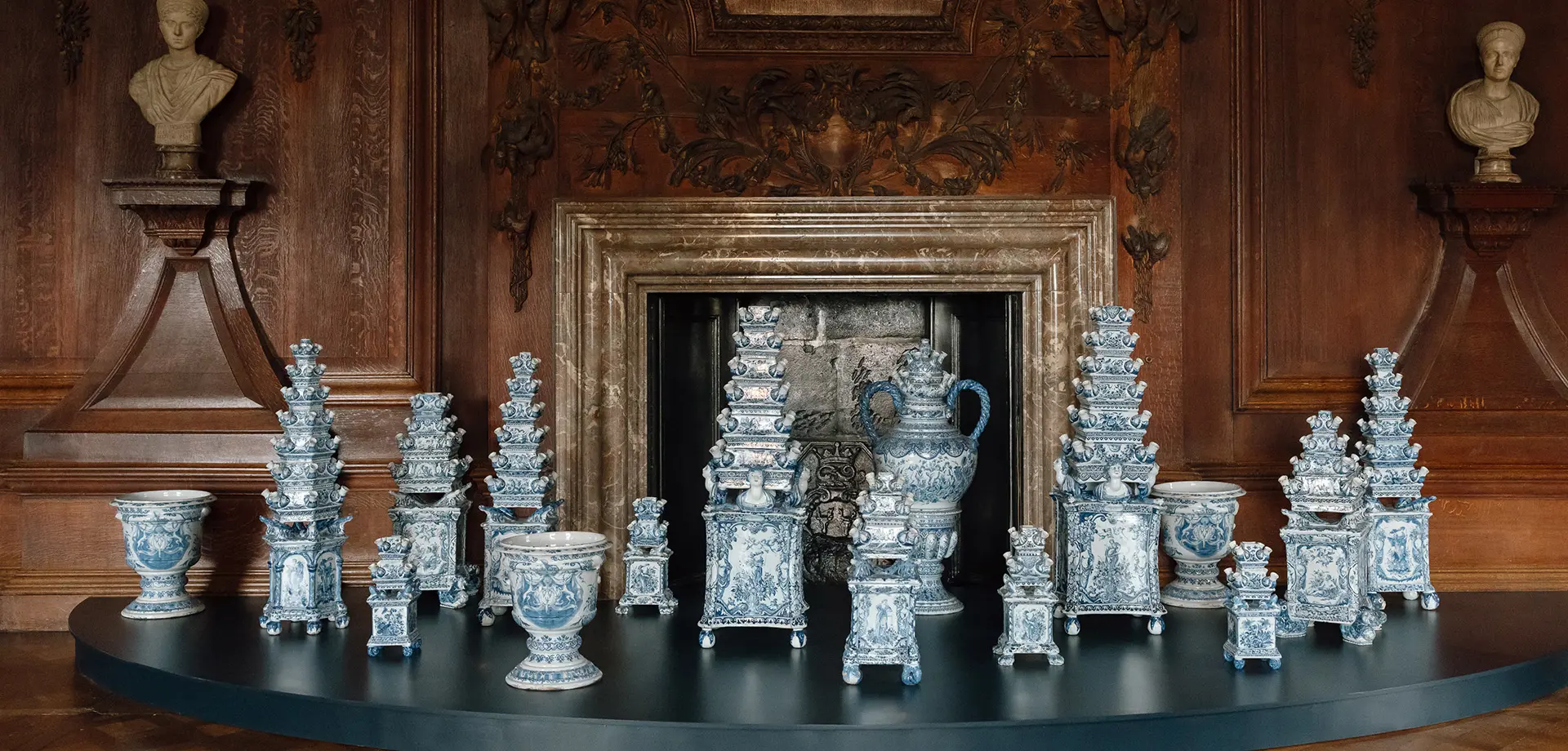Among the treasures on display as part of this year's exhibition, The Gorgeous Nothings: Flowers at Chatsworth are a set of rare tulip vases, created in Delft between 1680 and 1695.
Commissioned by the 1st Duke of Devonshire, inspired by Queen Mary II’s passion for Dutch porcelain, these striking blue-and-white vessels embody a moment in history when global trade, horticultural innovation, and artistic craftsmanship came together.
In this film, discover how the tulip vases arrived at Chatsworth, their cultural significance, and their enduring beauty today.
We use platforms such as YouTube and Vimeo to display videos. These require the use of cookies, for which we need your consent. To watch this video, please click here to allow cookies.
Video Transcript
Chatsworth has undergone many alterations throughout its 500 year history, each generation adding their own art and taste. But amongst its treasures, few objects capture the spirit of the 17th century house quite like its Delft tulip vases.
These striking blue-and-white ceramics, with their intricate designs and towering forms, were not just decorative - they were also a symbol of status, wealth, and a fascination with the natural world.
Their story begins in the Netherlands, where the town of Delft became famous in the 17th century for its tin-glazed earthenware, using blue and white designs in conscious imitation of the highly prized Chinese porcelain then being imported by the Dutch East India Company. The particular form of these tulip vases – with its pagoda-esque shape of tiered basins – was made popular by Queen Mary II.
Mary was a passionate collector of Delftware, displaying items at Het Loo and Hampton Court Palace. She commissioned many pieces from the ‘Greek A Factory’ run by Adrianus Kocx. This is the same factory that produced the vases now at Chatsworth, which were likely ordered by the 1st Duke of Devonshire, a supporter of the new royal couple
Detail of Devonshire crest on one of the Delft pieces / Portrait of Queen Mary II / Portrait of the First Duke of Devonshire
Although we do not know exactly when the Duke placed his order, we know that the vases had arrived at Chatsworth by 1695, when payments were made for their transport from London.
As well as the tulip vases, the Duke commissioned a series of urn-shaped planters. These are visible decorating the wall of his greenhouse, painted in A View of Chatsworth by Jan Siberechts in around 1703.
Detail from 'A View of Chatsworth' by Jan Siberechts, 1703 / Close up of Delft Vases as depicted in 'A View of Chatsworth'
Their nickname – rendered in French as Tulipieres – ties them to another Dutch obsession - tulips. While the infamous Tulip Mania of the 1630s had passed by the time these vases were being made, tulips remained highly desirable, and their cultivation spread to Britain in the following centuries.
Even today, Chatsworth plays a role in preserving historical tulip varieties. Unlike the bold, modern hybrids, these delicate, streaked flowers trace their lineage back to the Dutch Golden Age, their colours shaped by a virus that once made them the most valuable flowers in the world.
These vases – despite their nickname – were not made for tulips alone. Their unique spouted design allowed for the arrangement of any single-stem flower - roses, peonies, and other prized blooms - to be displayed both as an individual specimen, and as part of an aesthetic whole.
At the time, fresh flowers in the home were a luxury. Greenhouses were rare, and to have an ever-changing display of blooms signified both great wealth and horticultural expertise. The vases themselves were incredibly expensive pieces, and so a display of cut flowers arranged in the towering pagodas was not only visually arresting, but testament to the wealth of the owner. In the Chatsworth accounts, we can see that resin and bees wax was purchased specifically to mend the ‘Dutch ware’, which shows how highly they were valued.
The vases themselves are feats of craftsmanship - stackable, each layer holding water separately, allowing flowers to be arranged with care. And just like the flowers they once displayed, they remind us of an era when beauty, science, and global trade were deeply intertwined.
Today, they stand as symbols of the 1st Duke’s vision, of Queen Mary’s taste, and of a time when a single bloom, placed carefully in a vase, could represent the height of sophistication.






